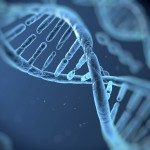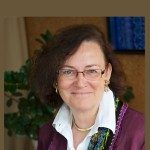Link to Pubmed [PMID] – 18339676
Development 2008 Apr;135(8):1427-37
The planar polarity and staircase-like pattern of the hair bundle are essential to the mechanoelectrical transduction function of inner ear sensory cells. Mutations in genes encoding myosin VIIa, harmonin, cadherin 23, protocadherin 15 or sans cause Usher syndrome type I (USH1, characterized by congenital deafness, vestibular dysfunction and retinitis pigmentosa leading to blindness) in humans and hair bundle disorganization in mice. Whether the USH1 proteins are involved in common hair bundle morphogenetic processes is unknown. Here, we show that mouse models for the five USH1 genetic forms share hair bundle morphological defects. Hair bundle fragmentation and misorientation (25-52 degrees mean kinociliary deviation, depending on the mutant) were detected as early as embryonic day 17. Abnormal differential elongation of stereocilia rows occurred in the first postnatal days. In the emerging hair bundles, myosin VIIa, the actin-binding submembrane protein harmonin-b, and the interstereocilia-kinocilium lateral link components cadherin 23 and protocadherin 15, all concentrated at stereocilia tips, in accordance with their known in vitro interactions. Soon after birth, harmonin-b switched from the tip of the stereocilia to the upper end of the tip link, which also comprises cadherin 23 and protocadherin 15. This positional change did not occur in mice deficient for cadherin 23 or protocadherin 15. We suggest that tension forces applied to the early lateral links and to the tip link, both of which can be anchored to actin filaments via harmonin-b, play a key role in hair bundle cohesion and proper orientation for the former, and in stereociliary elongation for the latter.

